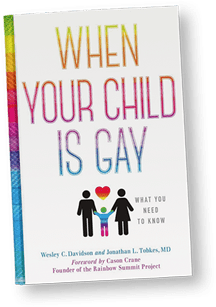Dictionary 101 for Straight Parents
Once Upon a Time, we lived in a binary world with Dick, Jane, and Spot. Girl wore dresses, boys wore pants. Girls were given pink lunch trays in the grade school cafeteria. The boys received blue trays. The boys went to “shop” and the girls went to “home ec.” There was no blurring of the binary rules. If a girl wanted to take shop, too bad. If a guy wanted to try his culinary skills in “home economics, he couldn’t. If a girl wanted to be on the boys’ baseball team or even if she identified as a boy, she might be regarded as a “tomboy.” Nobody knew about transgender kids then, their correct pronouns or their desire to use the bathroom they identified with.
It’s a whole new world now. For the older straight parent, the terms can be baffling (even Katie Couric had to learn them during the National Geographic Special “The Gender Revolution.” (February 3, 2017). Let’s start with the basics:
· Asexuality means a person who generally does not feel sexual attraction or desire to any group of people.
· Bisexual: a person who is attracted to both people of their own gender and another gender. Also called “bi.”
· Cisgender: Types of gender identity where an individual’s experience of their own gender matches the sex they were assigned at birth. e..g. straight.
· Gender is not the same definition as sex. Sexrefers to biological differences that include a person’s chromosomes and physical body. Gender refers to the behavioral, cultural, and psychological traits typically associated with one sex.
· Gender expression: how we manifest masculinity or femininity. Our behavior, speech, behavior, movement, and other factors as masculine or feminine.
· Gender free/agender. These people may not feel tied to any form of gender identity and often prefer the pronoun “they.”
· Gender identity. The sense of “being” male, female, genderqueer, agender, Sometimes it lines up with physical anatomy or expected social roles. Gender identity, biological sex, and sexual orientation are separate. People’s gender identity can shift over time. This means they are genderfluid. Bigender people may shift between feminine and masculine gender identities and presentations or feel like they are two distinct genders at the same time.
· Genderqueer: Identities which fall outside of the accepted sexual binary. May also refer to people who identify as both transgendered and queer, i.e. individuals who challenge both gender and sexuality regimes and see gender identity and sexual orientation as overlapping and interconnected.
· Intersex. Some people are born with both sexual organs and XXY. Non-binary: people who don’t identify as either men or women. It’s possible to be non-binary and identify outside of the male/female divisions, but still identify with a clear gender identity
· Pansexual: not limited in sexual choice with regard to biological sex, gender, or gender identity.
· Queer: an umbrella term sometimes used by LGBTQA people to refer to the entire LGBT community. Can be regarded as offensive to some, depending on their generation, geographic location and association with the word.
· Transgender: umbrella term for all people who do not identify with their assigned gender at birth or the binary gender system.
· Transsexual: a person whose gender identity is different from their biological sex.

When Your Child Is Gay: What You Need To Know
For more detailed advice, see book, co-authored with a mother of a gay son and a psychiatrist, Jonathan L. Tobkes, M.D.